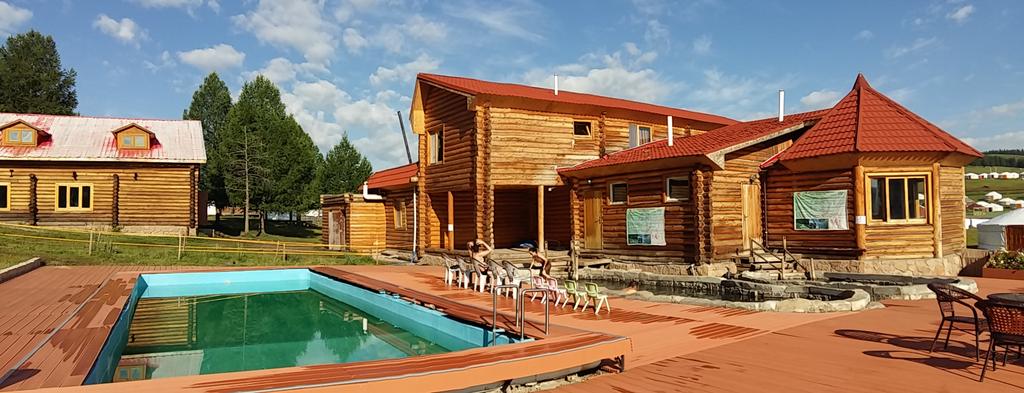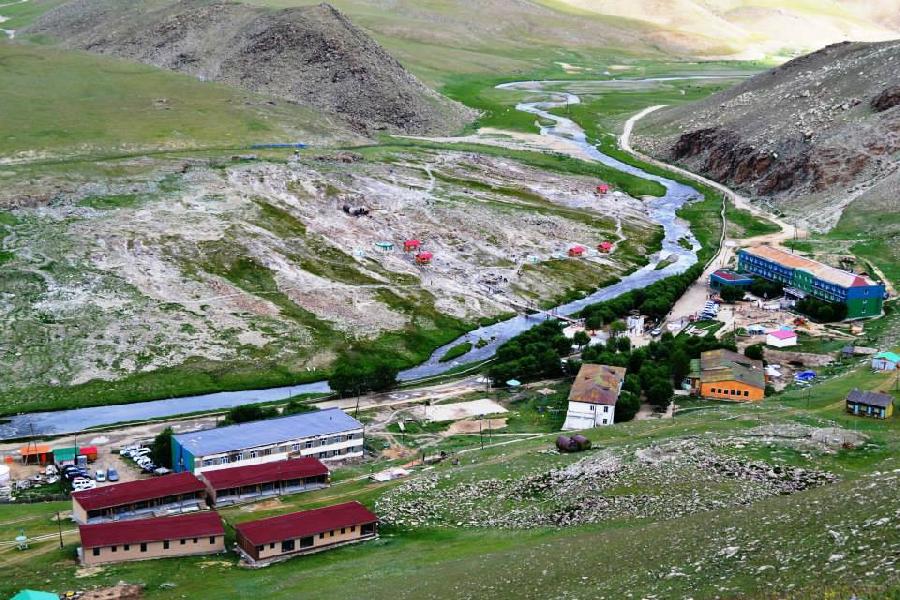Mongolia is home to about 250 hot springs, mineral water reservoirs and other geothermally heated groundwater, with therapeutic properties. Nearly 30 of them have proven medical uses, almost ten of them have limited medical properties, over 60 cold mineral springs, one therapeutic steam hole and 42 hot mineral springs.
Some of these springs are located close to Ulaanbaatar – and four or five of them are inside the city limits. Spa resorts Orgil and Ulaanbaatar are built on existing mineral springs, and popular among residents and visitors alike.
A mineral spring named after Queen Dondogdulam is located to the north of Ulaanbaatar, while a mineral spring which the last Khan of Mongols drank from is inside the Bogd Khan Palace Museum gates, to the south of the capital. Other springs and mineral water sources around Ulaanbaatar are still used for various medical purposes today. This is the short version; now let’s introduce you to some of the hot mineral springs in detail.

Khujirt Hot Spring
Khujirtiin Rashaan (Khujirt mineral spring) is located in Khujirt sum of Uvurkhangai Province, 390 kilometers from Ulaanbaatar. The spa resort here is famous for its hit spring water called “Kukh Suvd” or Blue Pearl, and therapeutic mud named “Khar Suvd,” or Black Pearl.
Blue Pearl mineral water possess many different minerals that are useful for the body: sodium, calcium, potassium, hydrogen sulfide and others. This mineral spring is particularly effective for joint pains, skin irritations and diseases, bone fractures and generic health concerns of women. The spa resort offers traditional and physical treatments in addition to the natural spring and mud therapies.
Shargaljuut Rashaan /Shargaljuut Hot Spring/
Further away from the city there is another popular natural spring called Shargaljuut Rashaan, located about 650 kilometers from the capital. It contains over 100 hot springs, pouring out from a field of geothermally heated granite. Each of the different holes have mineral waters of varying temperature and likewise differ by their mineral composition.
One can determine which mineral water is better suited at treating which ailment just by recognizing the rock it’s springing from. For example, a spring known to have favorable impact for teeth springs from a rock shaped like a tooth. If things get confusing, there are little signs placed by each of these springs that should tell you their purpose. For first-timers, it’s fun touring the entire spring and comparing rock shapes with their corresponding texts, and see how peculiarly they fit together.
Try not to hesitate when you think about the purported effectiveness of mineral springs at Shargaljuut: there are thousands of visitors who can vouch for its health benefits. One of the largest spa resorts in Mongolia is at Shargaljuut, operating for more than 50 years so far and serving hundreds if not thousands of visitors each year.
Onongiin Rashaan /Onon Hot Springs/
Now, let’s head east from Ulaanbaatar and discuss Onongiin Rashaan. The two spring pockets, named the “lesser” and “greater” springs, have 8 kilometers between them and are collectively called Onongiin Rashaan. Temperature of mineral water from 24 of its springs range from 14 – 98 degrees Celsius. Onon Springs are located in a unique and beautiful natural habitation, making it an ideal destination for leisure and recreational outings.

Studies completed in 1960s on these springs concluded mineral water from Onongiin Rashaan has benefits for chronic bone pain and has positive effects on the nervous system. Visitors treating themselves with mineral springs from Onongiin Rashaan observe substantial traditional customs, most likely because around 60 maarambas (healer monks) lived in a temple in this area sometime in the 17th century.
Before jumping into spa treatment, visitors first pray to both the greater and lesser ovoo, or mounds of worship, then offer dairy foods to the surrounding habitat. Then they treat themselves to its mineral waters once on the first day, twice on the second day, three times on the third day, twice on the fourth and once on the fifth and final day. All visitors must abide by rules and traditions such as these.
Mongolians, especially ones that occasionally visit hot spas, always make sure to abide by local traditions before taking part in spa treatment. This includes enduring a rather strict health regime in the aftermath. The first two spa destinations you’ve just read are two of the largest in Mongolia, while the last one is a smaller, local mineral spring.
Out of 130 mineral springs with official and proven medical applications, 20 of them have licensed spa resorts operating on them. Six of the largest and most popular resorts, Avarga Toson, Janchivlan, Khujirt, Shargaljuut, Orgil, and Ulaanbaatar serve a total of over 40,000 visitors each year.
Visit: Available Tours
Resource: mongoliatravel.guide

